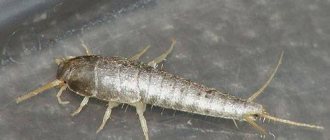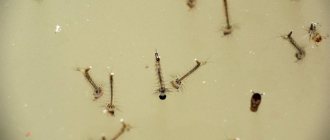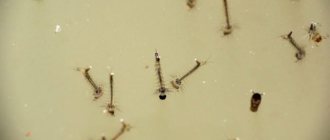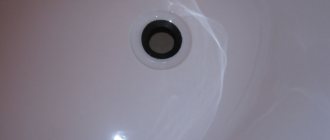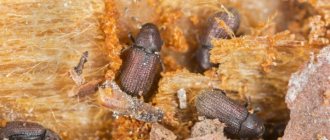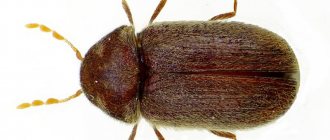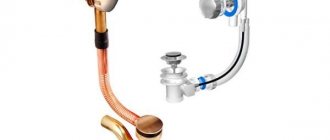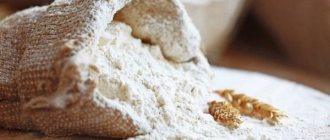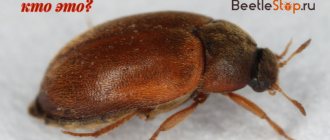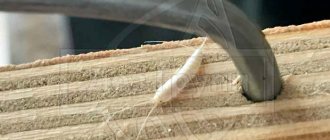Insects appear in the bathroom because suitable conditions are created there for them:
- Excessive humidity.
- Warm.
- Darkness.
- Secluded places to hide.
- Sufficient amount of food.
It would seem, what kind of food can insects find in the bathroom? Humidity-dependent species feed mainly on fungi and microflora. In addition, in bathrooms there is always an abundance of fallen hair and pieces of exfoliated skin, which can also be part of the diet of various pests.
Insects can enter the house through:
- Ventilation
- Cracks in communications
- Damage to walls, floors, ceilings
- Leaky joints in window frames
- Gaps in door frames
Parasites can enter the house accidentally on:
- Flowers and indoor plants
- Fruits, berries and herbs from the garden
- Shoes
- Pet hair
What exactly pests attach to largely depends on their species. What white insects
can be found
in the bathroom
and toilet?
Insects in the apartment
The appearance of small white bugs in an apartment will surprise the most experienced homeowner. Among the many types of insects, there are several similar ones, which may turn out to be white, beige or transparent.
Below are photos and names of white insects in an apartment or house:
- silverfish - small bugs up to 1 cm long, having a white, light gray or translucent, elongated body ending in 3 hairs; they are active only at night and can move quickly;
- woodlice - gray, gray-white or brown individuals, the body of which is divided into segments, each of which has a pair of legs, belong to the type of land crustaceans, breathe with gills - such insects are found in the house from dampness and their main diet consists of plant debris and water;
- mosquitoes and larvae - prefer to rest during the day in a room with high humidity;
- sewer beetle - distinguished by its gray-black color and large size (up to 3 cm), a strong shell that protects it from being crushed, very agile and fast, prefers warm and damp places;
- spiders, midges, centipedes or ants - are able to penetrate from the basement or neighboring apartment through ventilation pipes;
- small black bugs in the bathroom, called beetles or flour beetles, feed on cereals and bulk foods.
Insects in the apartment and bathroom
Bed bugs
home parasites
Bedbugs can live in almost any nook and cranny of the house, and they multiply at an extraordinary speed. Being parasites, at night insects jump onto the bed, bite people and begin to suck their blood. Surprisingly, the larvae begin to feed from the very beginning of their lives and differ from adults only in size.
By and large, several varieties of bed bugs can parasitize an apartment, but it is almost impossible to distinguish them from each other without a microscope and some knowledge.
It is much more difficult to poison these pests than cockroaches, since the majority of insecticidal preparations on sale are not effective against them. As a rule, special dusts, sprays, and aerosol insecticides are used to kill bedbugs.
House ants
thief ants and red ants
Speaking about the harm caused, it can be noted that these domestic insects - like many of their main brethren - can spread various infections and also spoil food.
The main problem with breeding ants is that very often their colonies have many nests, which are combined with each other and are even located in different apartments. It is for this reason that destroying one nest will not give the desired effect: as long as there is a single colony, the parasites will return to the apartment again and again.
It is necessary to fight them together - preferably by all residents of the house at the same time. Only in this case there will be a positive effect, otherwise, only temporary removal of ants can be achieved. Almost any insecticide is suitable for extermination, but the best method is still special poisoned bait.
Insect habitats
Absolutely all insects cannot do without water, therefore, when they get into an apartment, they look for rooms and places in them located closer to sources of moisture:
- pipes (water supply and sewerage) on which condensate accumulates;
- hard-to-reach and well-hidden areas in the bathroom, near communications;
- wet or damp rugs on the floor, various hygiene products with moisture residues;
- places where dust accumulates and is not removed (the floor under the bathroom, the backs of shelves in a cabinet, etc.).
On a note!
The appearance of white or gray bugs in the bathroom is most often caused by poor sanitary conditions in the room. In addition, some insects may come from neighbors after baiting has been carried out in their apartment. Some exceptionally tenacious specimens then migrate in search of a new home.
Color
If we talk about color, then compared to other insects, wasps (the species whose photos you saw above) are distinguished by a wide variety. Thus, some species are distinguished by quite bright contrasting yellow or black stripes, and have such an appearance that it is almost impossible to recognize them. They are often called wasp bees. The rest of the species may differ in completely different colors, ranging from rich black to purple or turquoise. In any case, they have a fairly recognizable body color, as a result of which they almost never become victims of random attacks, simply scaring away all kinds of birds or mammals.
It is worth noting that wasps have the maximum possible number of insect imitators, trying to copy their appearance and coloring in order to protect themselves from predators. The most famous example is the hoverfly, which is very similar to a wasp. Various mammals and birds, who know that an insect with a yellow-black color mainly has a dangerous sting, prefer not to attack, while in fact such a fly is completely harmless.
It is noteworthy that the body of wasps for the most part does not have as many hairs as is the case with bumblebees or bees, because the latter groups are standard pollinators, as a result of which they need hairs to collect nectar more efficiently. Some species of wasps do not have wings at all. Such wasps, the types and characteristics of which differ from other species, parasitize in the nests of ordinary paper wasps, while the absence of wings does not deprive them of a fairly strong poison and a powerful sting.
Silverfish
Such small, long insects are able to move very quickly on their numerous legs, penetrating into the narrowest crevices. They instantly hide when the light is turned on. Silverfish multiply quite quickly, so they pose a problem for apartment owners.
Their diet includes various substances: wallpaper paste, mold fungi, book bindings, sugar-containing products, fabrics and leather (not synthetic), food scraps and even wet paper and rags. Due to their nocturnal lifestyle, silverfish are difficult to spot immediately.
These gray-white beetles appear from dampness and choose corners with high humidity to live. They are not dangerous for humans: they do not bite due to their too small mouth, and they do not spread bacteria.
On a note!
The only harm such insects can cause is to the nervous system of people who are frightened by their rapid movement across surfaces, and if they also crawl over the body, then impressionable women may faint.
Silverfish and woodlice
Eating methods
The class Insects is also distinguished by a variety of feeding methods. Among them you can find parasites, predators, blood-sucking, saprotrophs and herbivores. This also determines the diversity of the structure of their mouthparts. Let's remember what insects pollinate plants. These are bees and bumblebees. Their gnawing-licking oral apparatus is represented by an elongated tongue. And butterflies receive nectar with the help of a proboscis, which forms a sucking-type mouthparts.
eats plant leaves. Its gnawing apparatus is capable of grinding food. And some insects can pierce the integument of animals and plants to obtain blood or juices. These are aphids, bedbugs, mosquitoes, lice, fleas. Their mouthparts are piercing-sucking.
Woodlice
These insects have an oval body of light gray, white, beige or brown, convex on top, and consists of several segments. The bug has 7 pairs of legs and a hard shell, and in front there are antennae up to half the length of the body. In nature, woodlice love damp places, which is where they got their name, but sometimes they settle near human habitation. They can climb into the cellar and into some rooms in the house (bathroom or toilet) where there is high humidity.
On a note!
You can see such insects in the toilet or bathroom only when you turn on the light at night, because during the day they hide in secluded corners. Woodlice feed on plant debris and can harm plants in the garden. Inside residential premises, they can live not only in the bathroom and toilet, but also in living rooms where there are decorative flowers in pots. Here they find not only water, but also food.
Penetrating into living spaces, woodlice can not only frighten people who are disgusted by insects that run quickly, but due to moisture and mold they become carriers of various fungal diseases, which pose a danger to human health.
Therefore, it is imperative to combat such moisture-loving insects, taking all possible measures to destroy them.
How is a hornet different from a wasp?
In fact, few people know that the only difference between a hornet and various types of wasps is its size. If the length of a paper wasp is no more than 3 cm, then the hornet reaches a length of 3.5 cm or more. Among other things, a characteristic feature of hornets is a pronounced wide nape, which is especially clearly visible when viewed under a magnifying glass, as well as the presence of characteristic red spots in those areas in which paper wasps have black areas. It should also be said that, compared to wasps, hornets are quite peaceful towards humans and practically do not bite them.
How to get rid of white insects in the bathroom
If the number of pests is small, then you can get by with simple physical home remedies for insects:
- carry out a general cleaning of the bathroom, removing dirt and condensation deposits;
- treat the entire room with bleach or other disinfectant, then apply a solution of copper sulfate;
- You can reduce indoor humidity by regular ventilation or drying using electrical appliances.
Methods for controlling insects in an apartment
Other means to get rid of small white insects:
- a trap made of a wet birch broom, which is placed in a corner at night, attracts domestic insects and parasites, they get entangled in the twigs of the broom, so in the morning you can burn it or take it away from the house;
- traps made of glass jars, wrapped on the outside with paper or tape, on such a surface any insects can easily climb up and fall down, wanting to eat the bait in the form of an apple, sugar, etc., they cannot get back along the slippery walls;
- moisten a roll of toilet paper and leave it overnight - moisture-loving bugs will rush to get into it, in the morning it must be destroyed, but not unrolled (otherwise they will run away).
Important!
If you do not kill insects, white or transparent bugs can spread throughout the apartment. Therefore, if you fail in your independent struggle, it is better to contact the sanitary and epidemiological service.
Bite
Each wasp has fairly powerful jaws called “mandibles.” They are used both for feeding on a variety of plant foods and for killing caught prey. For example, in the vast majority of cases, hornets, which attack even large insects like praying mantises and cockroaches, practically do not use a sting, but can simply use strong jaws, crushing the chitinous covers of their victim.
The wasp moves quite quickly, but at the same time it has far from the highest speed among insects, as a result of which even well-armed predators often end up being victims themselves. In particular, dragonflies and predatory duck flies feed on them.
Chemical and folk remedies
To destroy white insects in the house, insecticidal aerosols are recommended, which should be used every week (Raid, Raptor, Dichlorvos, Clean House, etc.). When carrying out processing, personal protective equipment should be used (respirator or gauze bandage, rubber gloves on hands).
Insect control products
Folk remedies against silverfish and woodlice:
- scatter diatomaceous earth in the cabinets - a substance that kills crawling parasites; its solution can be used to treat cracks in the walls, tile joints, baseboards;
- scatter spices (cloves, etc.), essential oils or citrus zest inside the cabinet, which must be changed every 4 days;
- sprinkle boric acid powder mixed with chalk (in a ratio of 1:4) on the pipes, under the toilet and sink; the solution can be used to treat the surfaces of the pipes;
- against wood lice, it is also recommended to use a solution consisting of soda ash (3 g), tobacco powder and ground red pepper per 1 liter of water - this mixture must be sprayed in places where pests accumulate (plinths, ceilings, cracks and corners in the bathroom, toilet and cellar) ;
- To catch woodlice in flower pots, baits made from potatoes or carrots are used; to do this, cut out the middle of them and leave them overnight - when they get in there, the baits are destroyed along with the bugs.
Cockroaches
If you have cockroaches in your house, then you urgently need to take measures to destroy them.
After all, even your clothes can suffer from these nasty insects. The cockroach has a rounded body 2-3 cm long. The color of this insect is usually either black or dark brown. The cockroach also has a strong jaw and gnawing mouthparts.
Why do cockroaches start chewing clothes? The fact is that these insects are very attracted to the smell of human sweat and stains from various foods on clothes. They are also sometimes attracted to starch, which is used when washing things. That is why the cockroach attacks your things and greedily begins to eat leftover food. As a result, the fibers on the fabrics become thinner and many small holes appear.
We invite you to familiarize yourself with White Currant White Fairy (Diamond)
Prevention of bugs
In order not to solve the problem when white insects appear in the apartment, the following preventive measures should be taken:
- regularly wipe off condensation and dust on pipes;
- Maintain cleanliness in the bathroom and toilet;
- check how well the ventilation works in service areas (toilet, bathroom, kitchen), if necessary, periodically clean the shafts;
- make cosmetic repairs by sealing all existing cracks near the baseboards, in the walls and on the floor;
- If there is a leak, the taps should be repaired immediately, avoiding the accumulation of moisture;
- dry corners that are too wet using a fan heater, because insects can lay eggs in such places, and hot air will destroy them;
- if mold appears, such areas should be thoroughly treated with chlorine and then dried;
- in the kitchen you should regularly check all cereal stocks and do not leave crumbs;
- prevent the accumulation of garbage, remove food and other waste in a timely manner.
With regular cleaning, drying and compliance with hygienic rules in service areas (bathroom, toilet and kitchen), no white insects will be able to settle in the house due to the lack of the high humidity necessary for them.
Home thermobia
In living spaces, unpleasant-looking insects called silverfish often appear and settle for a long period of time. The bugs have no wings. An oblong body with a small head with antennae and three tails in the form of processes causes outright hostility among people. They get stuck in the darkened holes in the corners. Home thermobia settles in the bathrooms of apartments and country houses, causing damage to objects and coatings.
Small insects are not uncommon in the apartment. And it's not just fleas and cockroaches
But, taking certain precautions and following the clear instructions in the instructions when fighting all kinds of bugs, it is possible to achieve the desired effect, and no worms will appear in the apartment. Remember that only the owner will cope with the problem who treats the problem with full responsibility
What is this strange beast?
The parasites that have settled in your toilet or bathroom are common silverfish. These are insects with a small oblong body, thin legs (short legs - 8 pairs, main ones - 4 pairs) and processes on the tail and head.
Silverfish belong to the order of crustaceans and resemble woodlice. These small white bugs move very quickly, penetrate into the narrowest cracks and hide if you turn on the light. They are quite tenacious and once settled, they will remain for a long time. It is useless to hope that the problem will resolve itself. Not only that, but these insects have a high reproduction rate, so the beetle population will grow larger over time!
Small “relatives” of felt grass – root scale insects
Root bugs are the most dangerous pest of indoor plants and belong to the polyphagous family. The food supply of these insects mainly consists of succulents; it was with these ornamental crops that they were once brought to Russia. Females, larvae and eggs are extremely resistant to adverse external factors. These representatives of the order Homoptera are very prolific, producing up to 4 generations per year.
Appearance of the pest and the danger it poses
The main population of parasites consists of females. Males do not have such vitality and usually die after mating (females - after laying eggs). Females look like a white cylinder covered with a waxy coating. Their body length is only 2 mm. Males resemble whiteflies in appearance. Due to the presence of wings, they are often confused with white midges.
Unlike other types of pests, rootworms are not so easy to detect, because they live exclusively underground. If you remove a flower from the soil, you will find that its roots are strewn with many white dots, as if dusted with flour. By attacking the root system, these small white beetles cause the plant to stop growing and its leaves to become faded and deformed. If it is severely damaged, it dies.
Reasons for appearance
These parasites, like many others, appear due to the use of contaminated soil under conditions:
- waterlogging or drying out of the soil;
- lack of natural light, low temperature and humidity in the room where the flowers are located;
- untimely removal of dead parts of the plant;
- non-compliance with quarantine of new green inhabitants of the home.
How to destroy an insect and save a flower?
What to do if there are these tiny bugs in the substrate? To save the affected flower, you need to treat it with a ready-made insecticide or a self-prepared product. Measures to combat the scale insect should be taken as quickly as possible, otherwise this voracious creature will not leave its green victim a chance to survive. Information about the drugs that these white insects in the soil of indoor plants are afraid of:
| Type of action of insecticides | Drug names | Active substance | |
| Intestinal | Enter the insect's body through the mouth | Vermitek | Abamectin |
| Contact | Destroy parasites through contact with external integument | Zolon | Fozalon |
| Systemic | Toxic substances enter the sap of plants and then into the body of pests | Rogor | Dimethoate |
| Combined | Combines the properties of intestinal and contact drugs | Aktellik | Pirimiphos-methyl |
Folk remedies are also used to combat root bugs:
- mix 5 crushed cloves of garlic with 500 ml of water, then let the mixture brew for 4 hours;
- mix 10 ml of liquid soap and alcohol with 1 liter of water;
- prepare a highly concentrated infusion from tobacco.
Who is this?
Lately, in the mornings I’ve been seeing some insects right in the bathtub. Their back is dark gray, their abdomen is light, there are six legs, antennae on the tail and, it seems, on the head, too, the body is teardrop-shaped, the head cannot be distinguished from the body, from 4 to 12 mm in length. A very nimble creature. Who is this? Where does it come from? How to fight?
Added: This is a sugar silverfish. Maybe it will be useful to someone.
Among insects, silverfish are known. They also don't have wings. And the most interesting thing is that it never happened, while other lower insects had wings at least in their ancestors. Therefore, silverfish are included in the group of primary wingless. Sugar silverfish live in houses where it is warm and humid. Although her body is protected from drying out by dense silver scales and she can run into dry places, she still prefers dry corners with mold. Dryness is detrimental to it during moulting, when the old skin is shed and the new skin has not yet hardened. Silverfish reach a length of one centimeter. These are graceful, silvery, swift creatures that look like long woodlice. They are nocturnal and run away in panic when the light turns on. They feed on plant debris - from starch to fiber. They can eat the paste used to stick wallpaper, damp paper, mold fungi and unicellular algae. Symbiotic bacteria living in their intestines help them digest fiber. In essence, silverfish are harmless to humans, although they occasionally damage food. The male lays a pear-shaped spermatophore and pushes the female toward it until she grabs it with her genital appendages. Eggs are laid in damp places, where the first instar larvae hatch from them. All larvae are smaller copies of adult insects, but become them only through a sequence of molts. Similar to silverfish, but larger and even more primitive, machilis run and jump among the stones, feeding on lichens. They live along the banks and can even run on the surface of the water. Their ancestors from the Triassic period differed from modern ones only in small structural details. So, when you turn on the light in the bathroom at night and see silverfish running away, do not swing your slipper at them: rather, marvel at the antiquity of their origin and the peculiar silvery beauty.
Tips for getting rid of silverfish
You always keep books and paintings that are very dear to you, which you consider a kind of treasure, where silverfish cannot penetrate. How unpleasant it is to find out that this insect has reached things that are of invaluable importance to you. That's just terrible. It is very difficult to determine their location during the day, because... They are nocturnal insects and only come out at night. Would you really like to get rid of these endless insects so that they will leave your favorite books, paintings, wallpapers and your silk fabrics alone? Then read this article to find out more about these insects and how to get rid of them. Let's start with a description of this insect. What is a silverfish? A silverfish is a small wingless insect that feeds on sugar and starch substances. They love to eat starch, which forms on glue, book binding, adhesives, and even wallpaper glue. In addition to starches, they can also eat cotton products (clothing, linen, etc.), linen, silk and anything made from synthetic fiber and dead insects. Although they cannot cause any harm to either pets or people , but your precious books, wallpaper and even clothes can be seriously damaged. How to get rid of silverfish? First things first, you need to start with cleaning: give your home a thorough cleaning. And if this problem overtook you at work, then you need to clean the office. You can start with their habitat, i.e. you need to get rid of their natural food and try to find the place where they are hiding. Silverfish habitat: - Basement; - Bathroom or place where you usually wash clothes; - Sink; They can be under the refrigerator; - All kinds of crevices; - Attic: You need to take good care of these areas and keep them clean. A hairdryer or fan is perfect for this. These measures will disrupt the natural habitat of the insects and force them to move to another more suitable place. What does silverfish eat? Silverfish feed on starchy substances. To prevent them from damaging your books and other important things, keep your bookshelves and their possible habitats clean. They will definitely not be able to take root in such conditions, and they will have to leave this place.
We got these creatures after a flood due to the fault of our neighbors, as a lot of water got under the bathtub. We will clean and disinfect.
Who are skin beetles?
Specialist coleopterologists classify this small insect as a member of the order Coleoptera. It has a brown sometimes black color. The insect is small oval in shape. The entire body is covered with short, stiff hairs.
Brown beetles are divided into four large classes, each of which contains from two to eight species. According to this classification, there are more than 600 species.
Types of bugs, what do they eat?
The following types are most common in apartments:
- ham (the most common is almost black in color);
- carpet (uses organic compounds);
- fur coat (has a black color with several white dots on it. Prefers crumbs, food scraps, table waste. The adult lives using accumulated nutrients);
- Kozheed Smirnova (brown in color. Settles in wooden structures: door and window frames, wooden floors and wall decoration, in furniture elements);
Any household items serve as a breeding ground for them: from organic compounds (leather goods, fabrics, books, furniture, carpets, waste products) to synthetics.
The diet includes: cardboard, felt, rubber, cable braid, asbestos structures. Capable of eating indoor plants and flowers. They can cope with almost all plant foods.
The grain beetle is capable of destroying nuts. Various types of grains and cereals, bran flour and products made from them. Ham specializes in meat and fish products.
Let's celebrate! Despite this omnivorous nature, small brown bugs are able to go without food for a long time. It has been established that this period can last up to five years. In this case, their biological processes slow down, but they remain viable.
